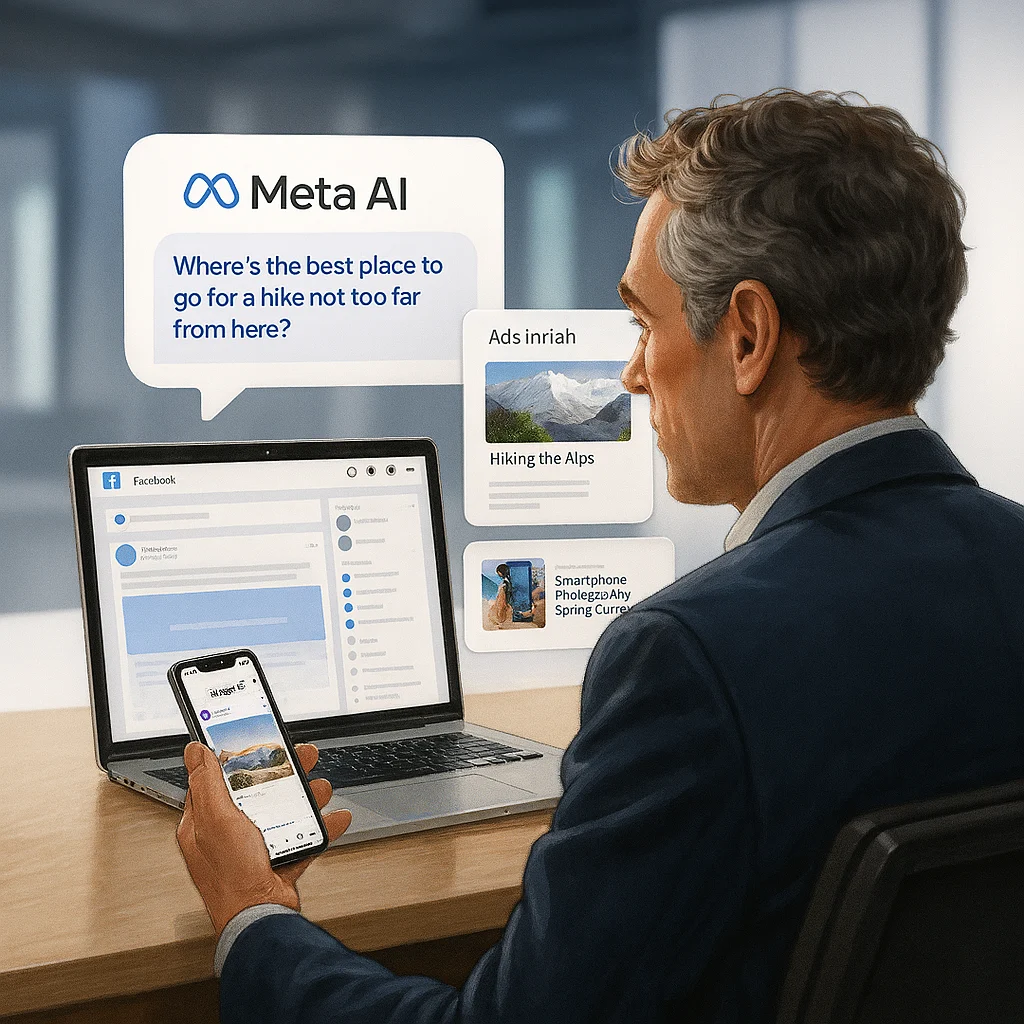Margabagus.com – Meta to personalize ads via Meta AI interactions is not a vague promise, it is a dated change with a defined start. Meta says that from December 16, 2025, your voice or text chats with Meta AI can become signals that shape the content and ads you see, alongside the usual likes, follows, and page activity. Notifications begin October 7, 2025, and Meta emphasizes that you can still use Ads Preferences and feed controls to tune what shows up in your apps. The company frames this as another signal, for instance, a chat about hiking may lead to hiking groups, posts, or ads for boots, the same outcome that might follow if you liked a hiking page. [1]
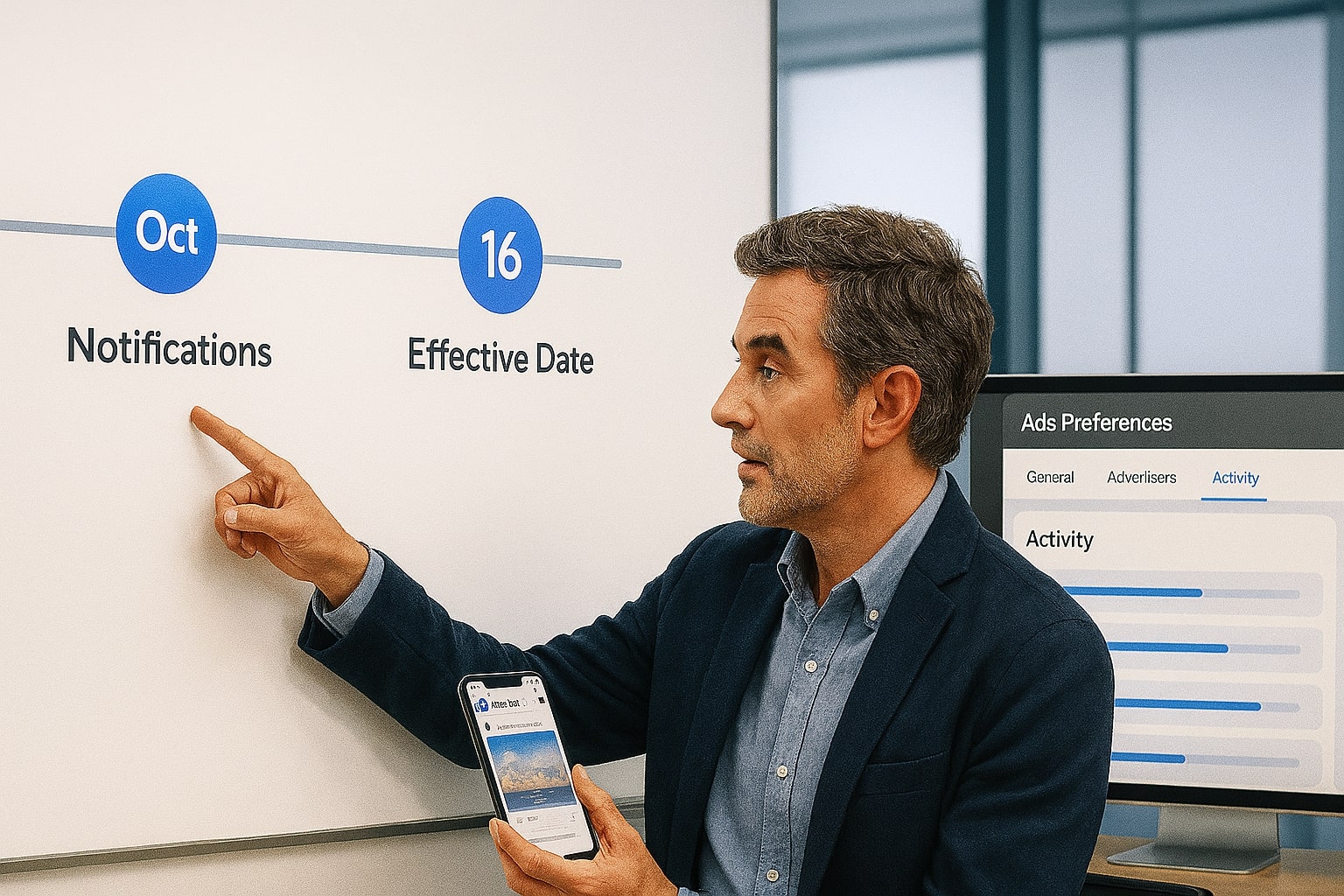
Timelines and controls, the update begins rolling out with advance notice.
Meta AI interactions and ad personalization, what changes in 2025
Meta’s policy update adds a new input to its personalization engine. The company states that interactions with its AI features, whether voice or text, will join existing signals that already drive recommendations for posts, reels, groups, and ads. Meta plans to roll out the change in most regions, with notifications sent weeks before the effective date. You will keep access to familiar controls such as Ads Preferences and Why am I seeing this ad, which remain the primary levers for tuning your experience. [1]
Several outlets reporting on the change note two additional points that many readers ask about. First, there is no opt out of this specific use of AI interactions apart from choosing not to use Meta AI. Second, coverage indicates certain regions are handled differently due to local regulation, so rollout will not be uniform everywhere at the start. [2][3]
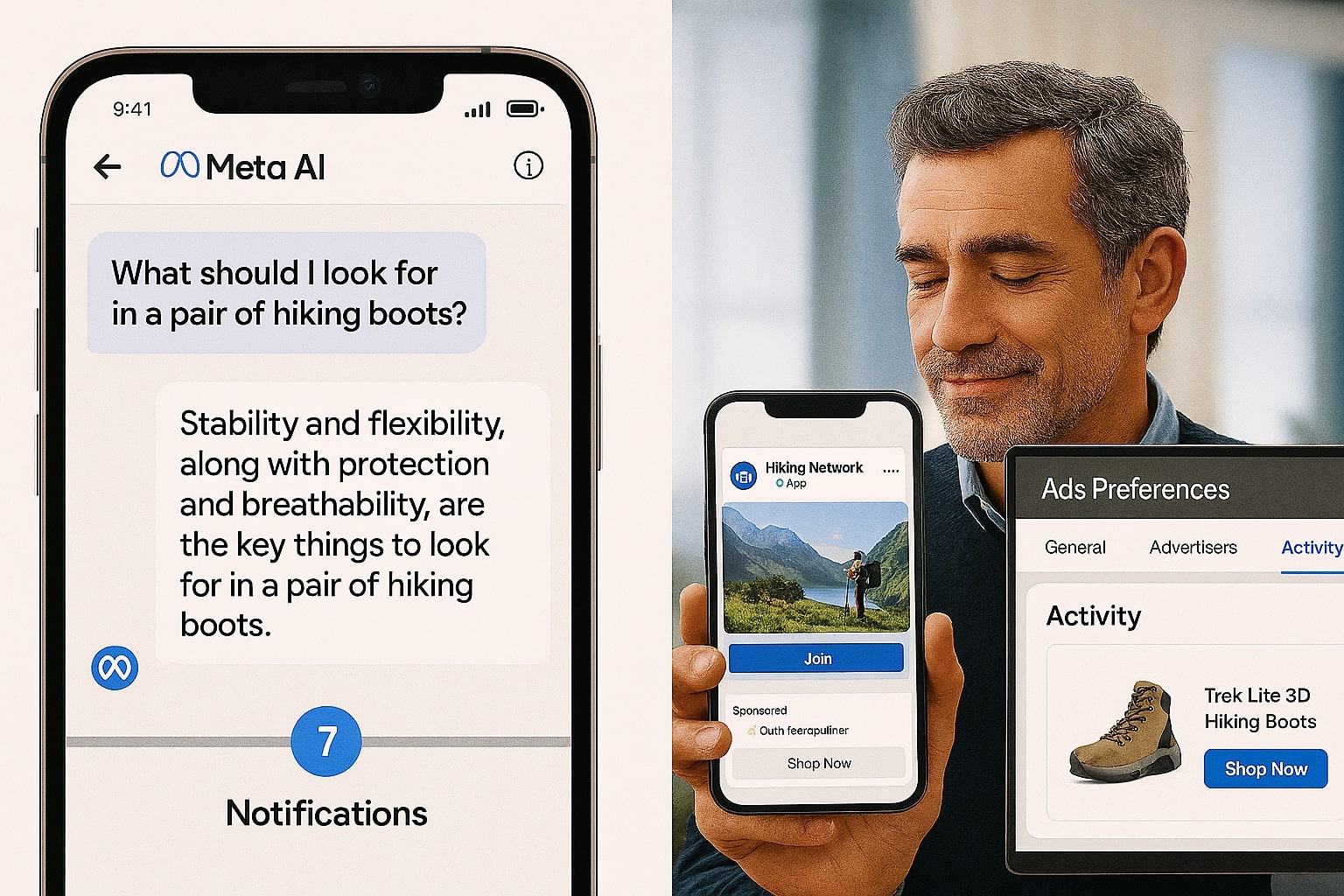
A simple path, a chat turns into a ranking signal for recommendations.
How Meta AI conversations shape your ad feed
Meta describes a straightforward chain. When you ask Meta AI about a topic, that interaction can be treated similarly to an in-app action. If you ask about budget hiking boots, the system may infer an interest in hiking, then increase the chance you see hiking posts, hiking group invites, or a boot ad. This is not a wholesale reading of your chats for creative copy, it is a classification of interest to improve ranking and targeting. [1]
In Meta’s own explanation, AI interactions are another piece of input that informs the personalization system. That system already relies on your likes, follows, page engagement, and on platform behavior. Now, a conversation can serve as a quick signal that you care about a topic, which is then used similarly to engagement with related posts. [2]
Check out this fascinating article: 2025 Meta Ads Strategy Guide: How Andromeda + Lattice Redefine Creative & Data Signals
What data is used, what Meta says it will not use
Reporting based on Meta’s briefing notes that content linked to sensitive categories will not drive ad targeting. Coverage highlights examples such as political views, health, religion, sexual orientation, ethnicity, and union membership. This exclusion mirrors long standing limits in Meta’s ads systems, which removed many sensitive detailed targeting options and continues to restrict certain categories. [2]
Meta also clarifies treatment of Accounts Center data flows. If you have linked accounts in Accounts Center, such as Facebook and Instagram, signals can inform recommendations across those accounts. If you have not linked a product like WhatsApp to Accounts Center, interactions in that product are not used to personalize experiences across different accounts. [1]
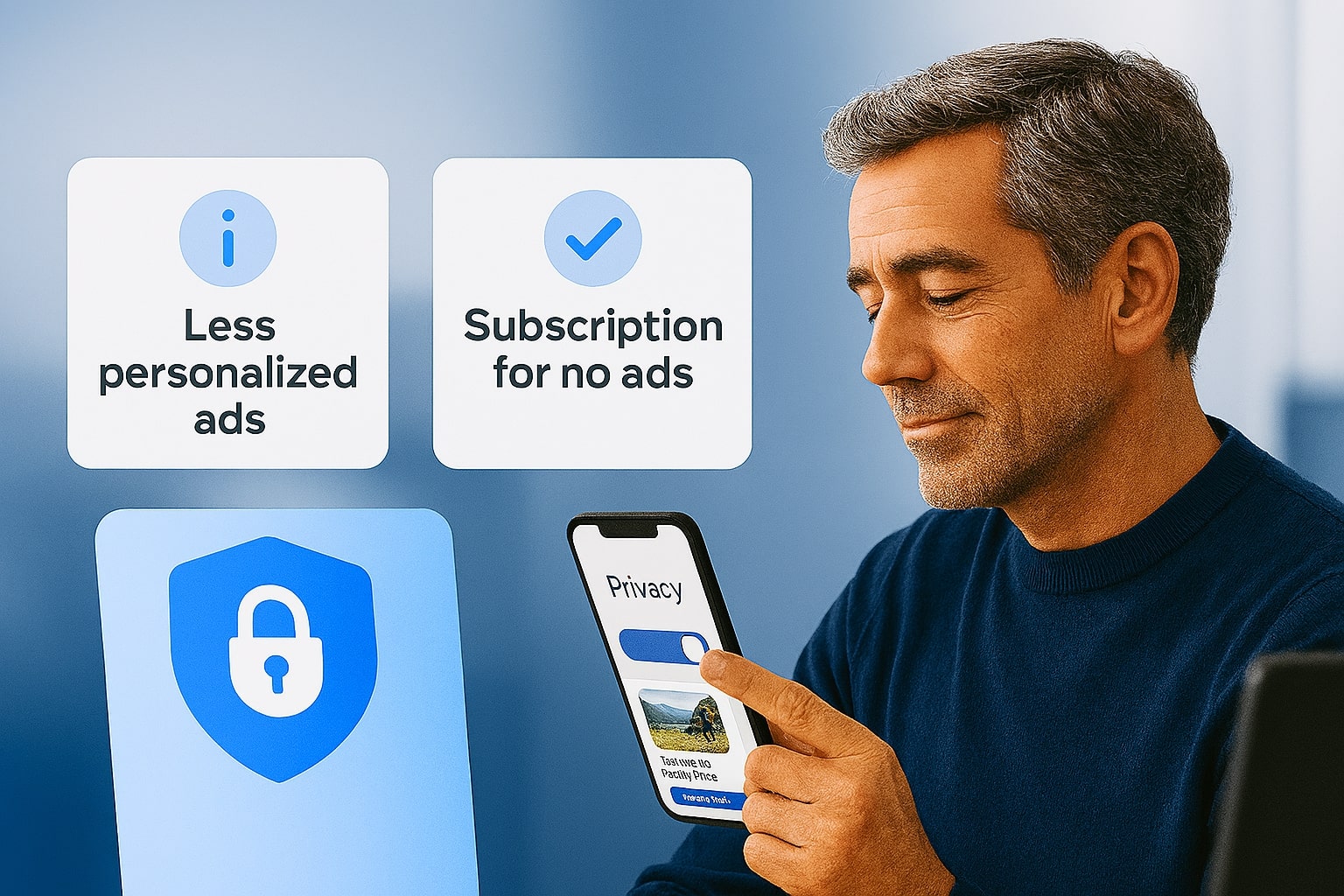
In Europe there are more choices, including subscription and lower data ads.
Your choices, personalized ads, less personalized ads, subscription for no ads
European users get a broader set of choices due to local rules. Meta introduced Subscription for no ads in the EU in 2023, then cut the price in 2024 and added a free less personalized ads option that relies on minimal data plus session context. The company explains that less personalized ads use a narrow set of data such as age, location, gender, and broad engagement, so relevance may drop. [4]
In the United Kingdom, Meta announced a local Subscription for no ads option in September 2025, with a lower price than the EU offering. The free experience continues to run with personalized ads, while subscribers see no ads and their data is not used for advertising. [5]
These choices interact with the AI update in a simple way. If you use Meta for free in a region without the subscription option or outside of the EU less personalized program, your AI interactions can become signals. If you subscribe to no ads where available, your personal data is not used to show you ads. [4][5]
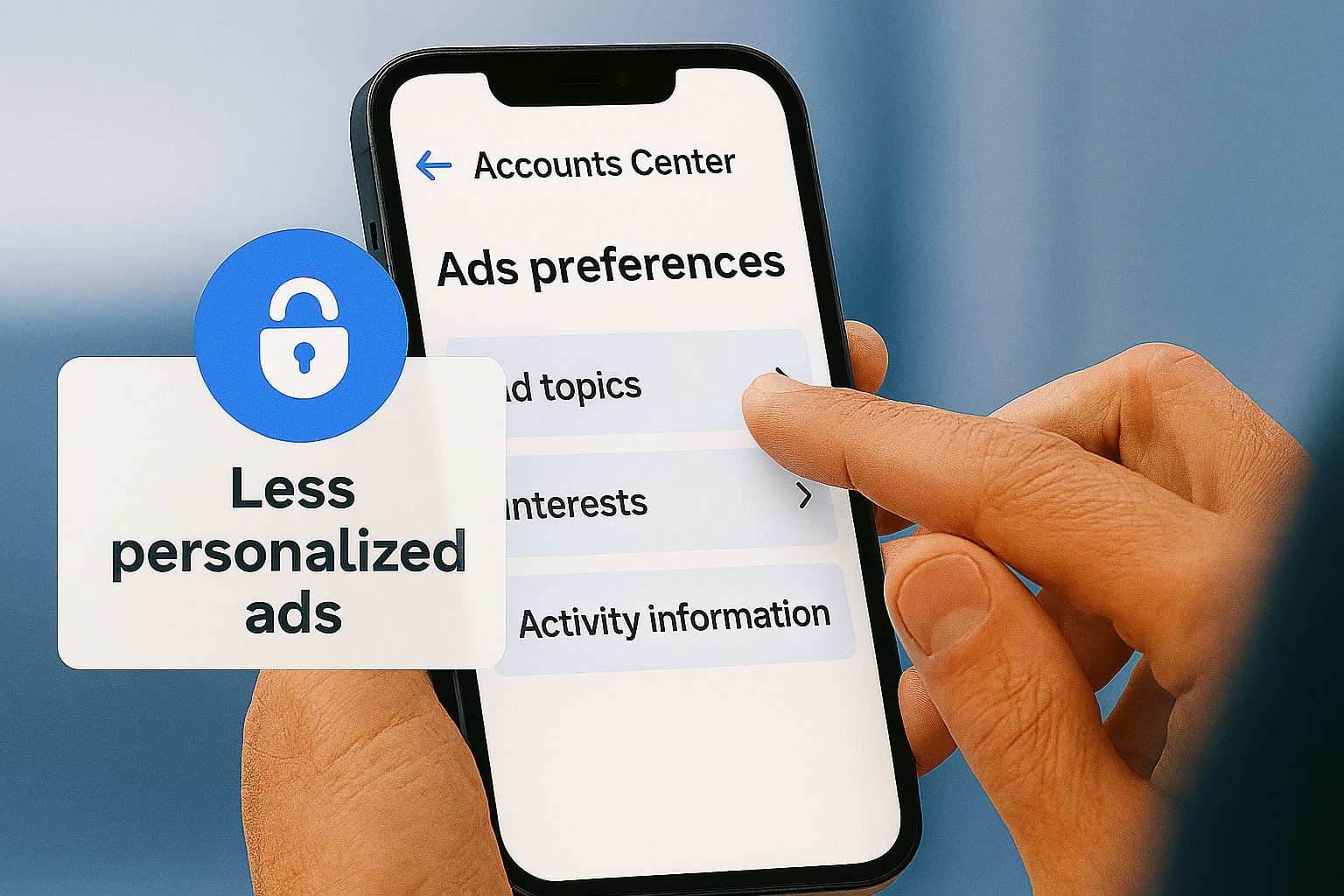
Start here when you want to review what informs ads.
How to adjust ad settings in Accounts Center
Understanding the control panel saves time. Accounts Center is where Meta centralizes cross account settings. You can find the Ad Preferences page there, review interests and topics, and manage the information used for ads. From there, you also reach the Why am I seeing this ad explanation and per advertiser controls. [6][7]
Step by step
- Open Facebook or Instagram, go to Settings, then choose Accounts Center.
- Select Ad preferences. Review Ad topics, Interests, and Activity information that informs ads. Use toggles to disable signals you do not want. [8]
- When you see an ad, tap Why am I seeing this ad, adjust the advertiser, and update the data sources that feed that ad. [9]
Step by step, reduce signals you do not want used
Controls differ by region, yet the following actions help almost anywhere.
- Review ad topics and interests
Use Ad topics to tell Meta to show you fewer ads about categories you do not want. Open Ad preferences, review topic list, choose See fewer where relevant. [8] - Review activity from partners
In Ad preferences, find the setting that governs Activity information from ad partners. If you prefer a narrower data set, turn off categories you do not want used. [8] - Manage off Meta activity
Open Your activity off Meta technologies. Use Manage future activity to disconnect future partner events. You can also clear past activity. This reduces off site behavioral signals that would otherwise inform relevance. [10] - Use per ad controls during browsing
Tap Why am I seeing this ad, then remove advertisers you never want to hear from. This is the fastest way to train the system in real time when a specific ad feels irrelevant. [9] - EU only, consider less personalized ads
If you are in the EU, you can choose less personalized ads. Expect lower relevance since the system relies on context and minimal data, and Meta may insert short ad breaks in that mode. [4]
Check out this fascinating article: How to Build Automated Facebook Ad Reports with Meta API and ChatGPT
Price comparison, subscription for no ads in EU and UK
Before you consider a paid route, compare prices across regions and platforms. These are official list prices announced by Meta.
| Region | Option | Web price per month | iOS, Android price per month | Additional linked account |
|---|---|---|---|---|
| EU | Subscription for no ads | €5.99 | €7.99 | €4 web, €5 apps |
| UK | Subscription for no ads | £2.99 | £3.99 | £2 web, £3 apps |
Prices above come from Meta’s newsroom updates and apply to the first account in Accounts Center, with smaller add on fees for each extra account you add. Offer details may evolve, so always confirm in your own app before subscribing. [4][5]
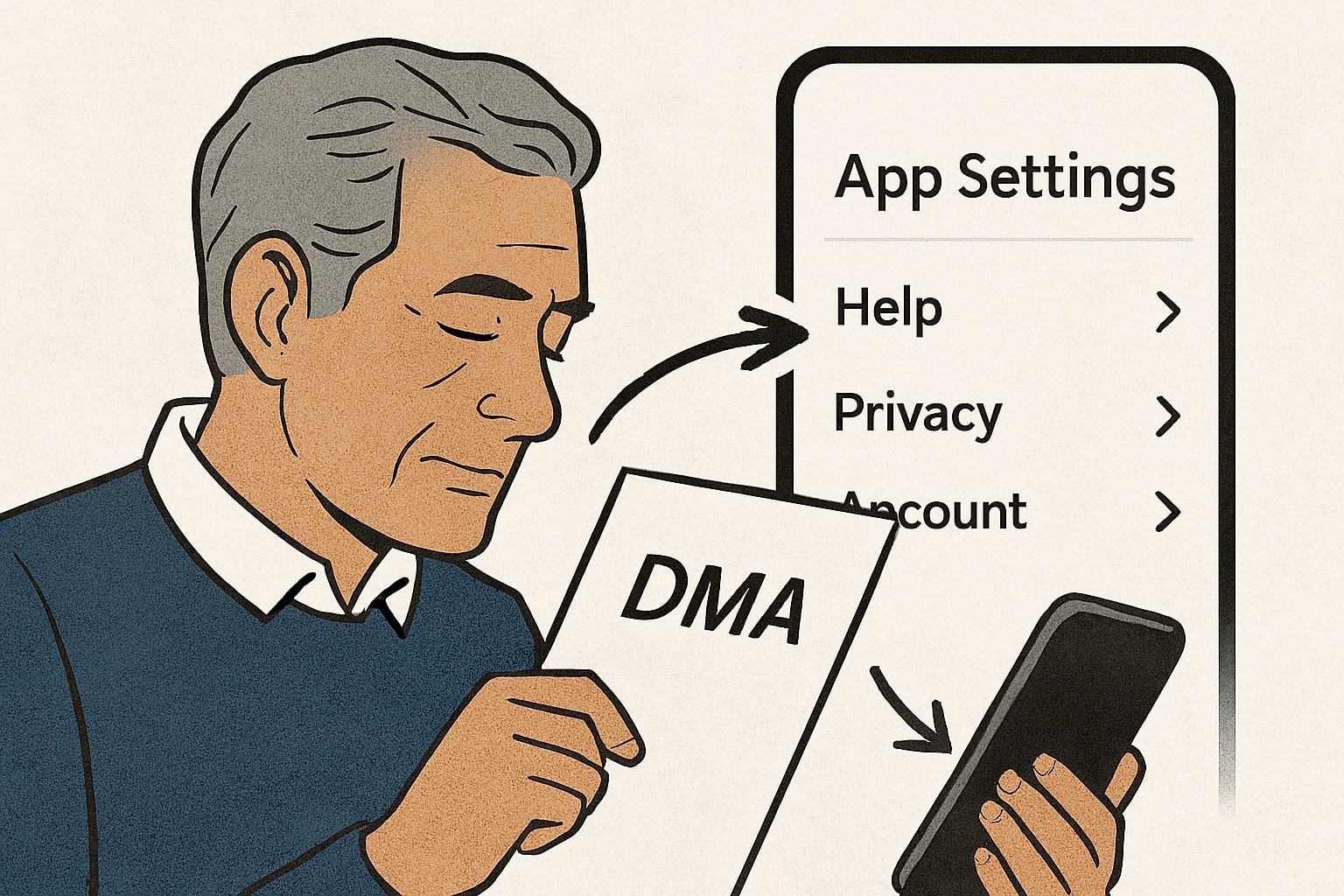
European rules continue to shape defaults, expect iteration.
Regional rules, privacy, and what regulators are watching
The EU spent the last two years pushing platforms to offer meaningful consent and alternatives to behavioral ads. Meta’s adjustments include the EU subscription for no ads, the lower price in 2024, and the free less personalized mode. Consumer groups have continued to challenge the model, and the European Commission has examined whether the design meets the spirit of the law. Expect continued iteration. [11]
Recent coverage also notes that Meta and Apple are discussing settlements with EU enforcers under the Digital Markets Act. The outcome matters because it could alter how consent and cross platform data flows are implemented at the product level. Marketers and privacy teams should watch those talks closely, since they can change defaults in the months ahead. [12]
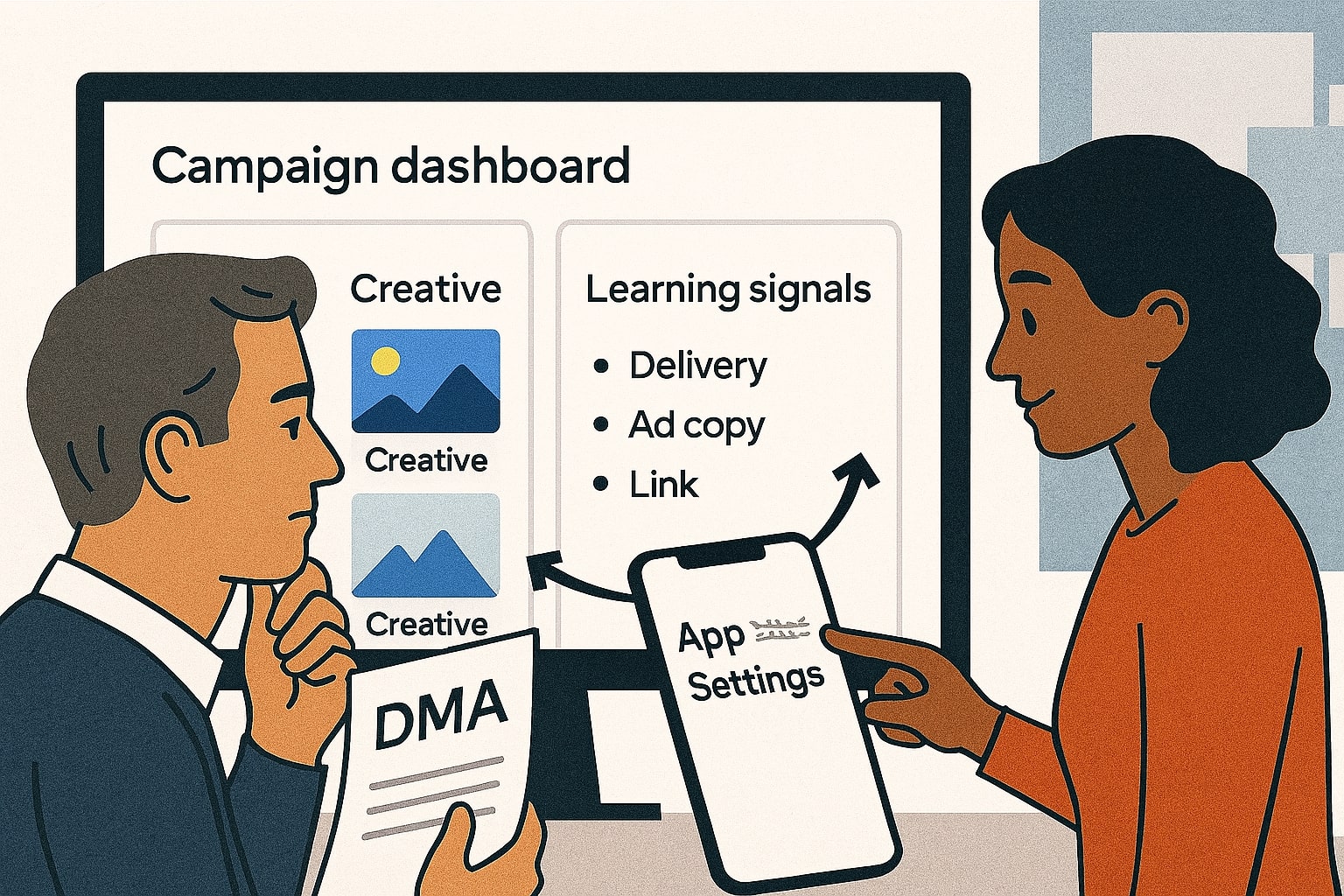
Treat AI chats as intent hints, keep creative and measurement strong.
For advertisers and creators, planning for the shift in signals
If you buy ads on Meta, the new AI interaction signal does not remove the importance of creative quality, conversion tracking, and measurement discipline. It adds a fresh way for the system to detect intent. That lift arrives with new responsibilities, since chats feel more intimate than likes, which is why sensitive topics are excluded from ad targeting according to reporting on Meta’s update. Align with your legal team on audience assumptions and avoid overfitting to chat derived topics that could spill into sensitive territory. [2]
Performance teams can run an audit in three parts. First, check whether creative and messaging match the kind of intent that AI chats reveal. Second, revisit your exclude lists and brand safety settings, especially if your category borders on health or civic issues. Third, refresh your measurement plan, including incrementality where feasible, because any change in how interest enters the system can change who sees your ads.
A practical checklist, five minutes to stay in control
Give yourself five uninterrupted minutes with your phone and finish the following.
-
Open Accounts Center, visit Ad preferences, and review Ad topics. Set See fewer for any topic you want less of. [8]
-
Open Activity information from ad partners. Turn off categories that feel intrusive. [8]
-
Visit Your activity off Meta technologies, choose Manage future activity, and disconnect future events if you prefer a smaller data footprint. Clear past activity if needed. [10]
-
While browsing, use Why am I seeing this ad on any ad that feels off target. Make it a habit for one week to train the system. [9]
-
If you live in the EU and want fewer signals used, consider less personalized ads or the subscription option. Compare the price with the time you spend in the apps. [4]
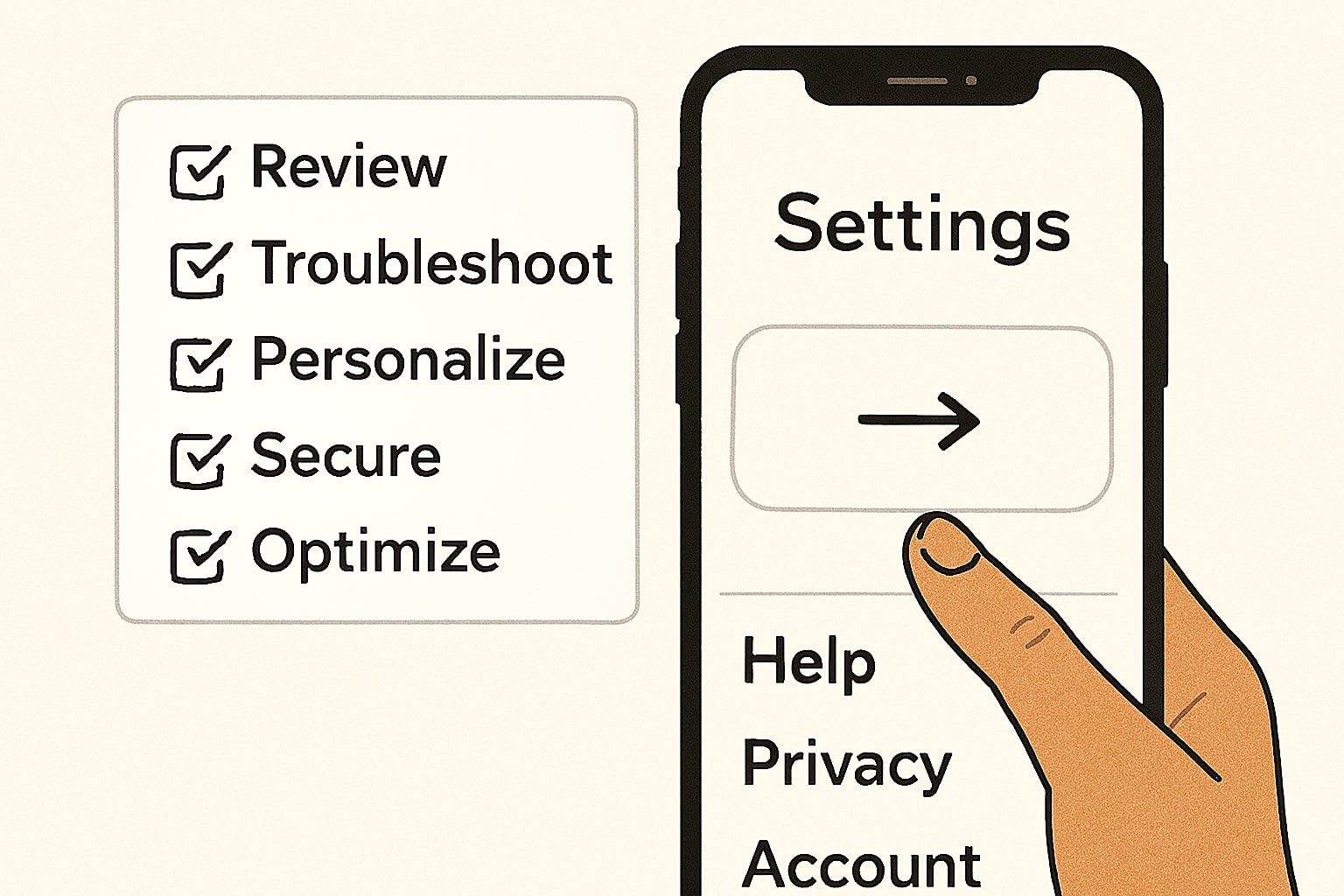
Spend five minutes to tune ads and reduce friction.
Meta AI interactions and personalize ads, what to expect next
The policy becomes active in December, so you have time to tune settings and adjust. You can keep using Meta AI with awareness, treat sensitive topics as off limits in chat, and lean on Why am I seeing this ad to correct course in the moment. If you prefer a cleaner feed and live where the subscription exists, consider the no ads plan, then watch your usage for a week and decide whether it is worth the fee. If you have a thought or question after trying the steps above, drop it in the comments, your experience will help others calibrate their settings. [1]
References
- Meta Newsroom — Improving Your Recommendations on Our Apps With AI at Meta ↩
- Reuters — Meta to use AI chats to personalize content and ads from December ↩
- The Verge — Meta will use AI chats to personalize feeds and ads ↩
- Meta Newsroom — Subscription for no ads in Europe and less personalized ads option ↩
- Meta Newsroom — Subscription for no ads in the UK ↩
- Meta Help — Settings you can manage in Accounts Center, Ad preferences ↩
- Facebook Help — Your Ad Preferences ↩
- Facebook Help — Control the ads you see and ad topics ↩
- Facebook Help — Why am I seeing this ad ↩
- Facebook Help — Review your activity off Meta technologies ↩
- Reuters — BEUC questions Meta’s revised no ads model in EU ↩
- Financial Times — Meta and Apple close to settling EU cases under the DMA ↩
FAQ (Frequently Asked Questions)
Meta says the change takes effect December 16, 2025, with notifications beginning October 7, 2025.
Reports say there is no separate opt out for this signal, apart from not using Meta AI. You can still adjust Ad preferences, Ad topics, and Off Meta activity.
Coverage of Meta’s briefing indicates that topics such as politics, religion, health, sexual orientation, ethnicity, and union membership will not be used for ad targeting.
Meta says cross account signals depend on what you add to Accounts Center. If WhatsApp is not added, interactions there are not used to personalize across accounts.
In the EU, subscription is €5.99 on the web and €7.99 on iOS or Android, with small fees for each additional linked account. In the UK, subscription is £2.99 on the web and £3.99 on iOS or Android.
Tap Why am I seeing this ad, remove the advertiser, and update the data sources for that ad. This gives immediate feedback to the system.
